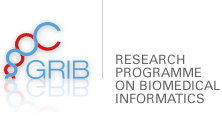
04/04/2019
Congratulations to the Computational Science group and Acellera for the great results at the D3R Grand Challenge 4
They have ranked first in two of the subchallenges.
Last summer, Acellera and the Computational Science group decided to participate on the D3R Grand Challenge 4, an international competition which offers several tasks considered to be of pharmaceutical interest. Usually, these tasks involve predicting how a drug binds into a protein and/or how strong this binding is. Ideally, if one could predict with high accuracy these values, the drug discovery process will be accelerated and the costs of developing new drugs would decrease. Hence, one of the valuable aspects of these challenges is that they can provide a rough measure of how far we are from this ideal situation.
Acellera and the Computational Science group, led by Gianni de Fabritiis, worked together in this project, using some tools which have already been available for a while at PlayMolecule, like KDeep or DeltaDelta, and developing a new one: SkeleDock. KDeep and DeltaDelta can make accurate predictions of this strongness of binding that we mentioned, but they need to see the interaction between the drug candidate and the protein. Where in the protein the drug binds? In which orientation the molecule places itself inside the protein pocket? These are the questions that SkeleDock tries to answer, using previous structural knowledge available in databases like the Protein Data Bank.
After facing several difficulties in the development of SkeleDock, they were able to provide -with some level of accuracy- answers to these questions, generating 3D pictures that capture the ligand inside the protein pocket. Then, they fed these 3D images to KDeep, so that it could make predictions on the strongness of the binding. Finally, they submitted these predictions.
This week, the D3R organizers have announced the results for the different subchallenges of the competition. We are happy to report they have ranked first in two of them (BACE free energy prediction and BACE scoring, both in stage 2), as well as achieving 6th position (depending on which metric is used) in the pose prediction challenge among more than 80 participants. However, there were other tasks in which they participated where they did not perform as well; namely, those involving the protein Cathepsin S. In this target, waters seem to play a very important role which, at this time, not SkeleDock nor KDeep account for. They will work on these aspects to improve these tools and, hopefully, they might perform better next time.
SkeleDock will be soon available at PlayMolecule for everybody and an article will be published with further details of the protocols used.



